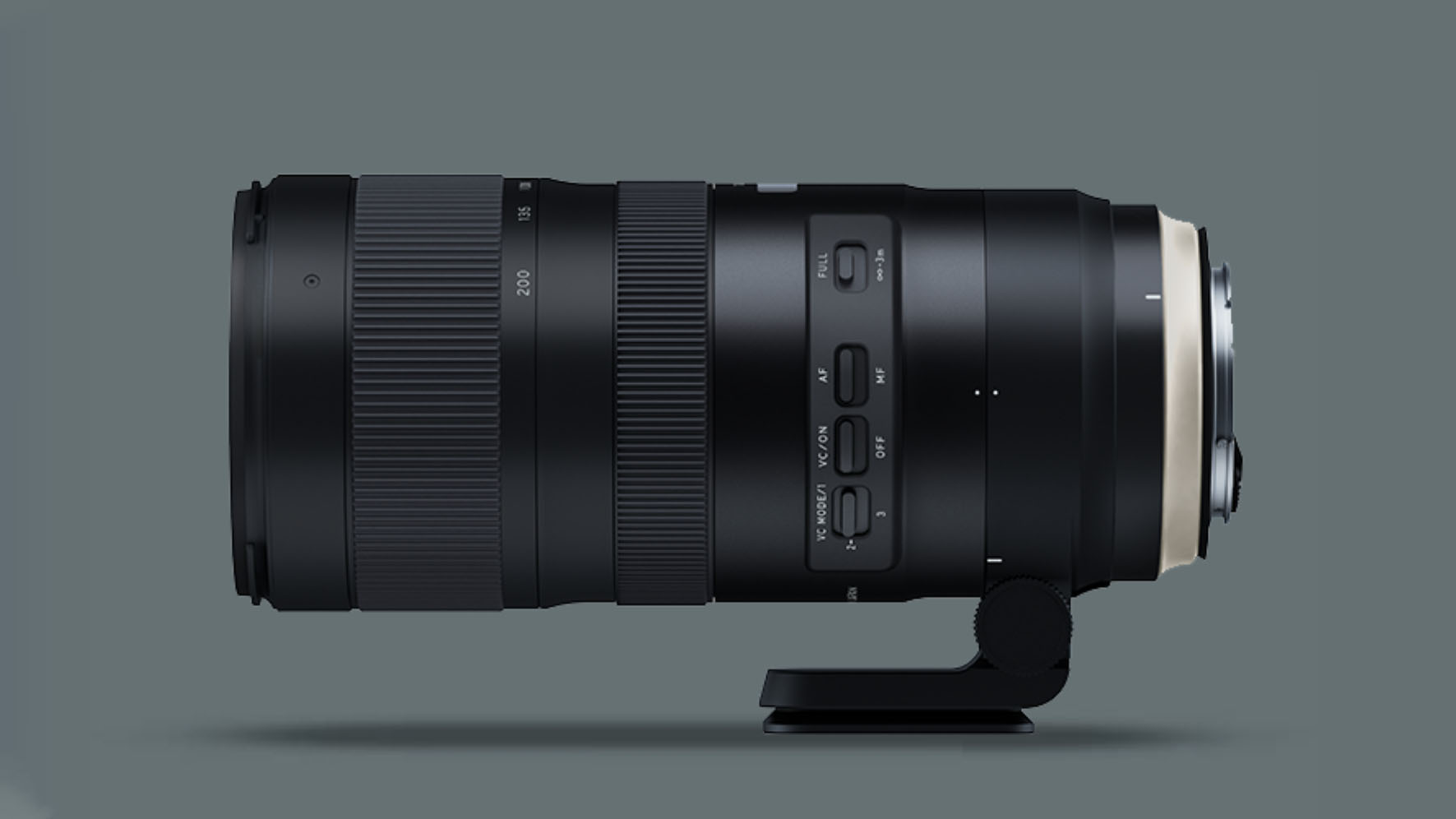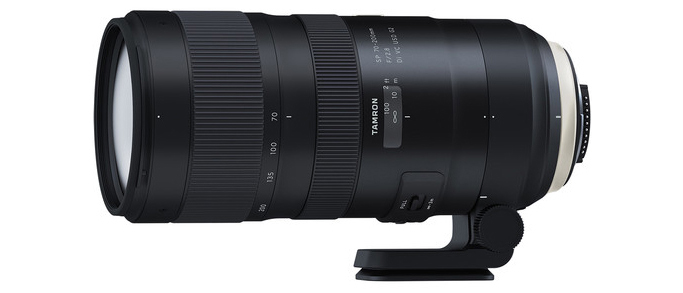Digital Camera World Verdict
There are a lot of reasons to love the Tamron SP 70-200mm f/2.8 Di VC USD G2. It's well built, lovely to handle, focuses quickly and delivers very respectable image quality. It's not without its weaknesses and rivals, such as the Sigma 70-200mm f/2.8 DG OS HSM Sports, which is a little sharper and arguably a better all-rounder, but the lens offers a unique balance of quality and price. A definite must to consider for enthusiasts and pros alike.
Pros
- +
-Center sharpness
- +
-Price
- +
-Build quality
- +
-Image stabiliser
- +
-AF speed
Cons
- -
-Edge softness wide open
- -
-Some adapter compatibility
Why you can trust Digital Camera World
The Tamron SP 70-200mm f/2.8 Di VC USD G2 is one of the so-called 'Holy Trinity' lenses that need to offer exceptional sharpness, reliable autofocus and a solid build, capable of withstanding the rigors of professional everyday use.
For professional photographers and advanced enthusiasts, owning a trio of f/2.8 zooms – a 14- or 16-24mm, 24-70mm and 70-200mm – is seen as a standard for allowing the capture of images at the highest level.
• Read more: Best 70-200mm lenses
Pros often put their gear through almost indecent levels of pressure, and each item needs to earn their trust, that it will deliver the goods when it counts most. Therefore any lens that falls into the trinity category has a lot of expectations to live up to.
Naturally with this brief comes a high cost. Many of the own-brand lenses in this bracket have a price tag of several thousand pounds/dollars, putting them out of the budget of many photographers not earning a significant portion of their living from making images.
This is where the third party lenses come in. The likes of Sigma and Tamron have been manufacturing lower-cost optics for many years, but lately there has been a real push by these brands to match or even exceed the optical quality and professional experience of the proprietary options.
The SP 70-200mm f/2.8 Di VC USD G2 completes Tamron's own Holy Trinity, after the Tamron SP 15-30mm f/2.8 Di VC USD G2 and Tamron SP 24-70mm f/2.8 Di VC USD G2. Both of these lenses have developed a good reputation, so the 70-200mm sibling needs to keep up the momentum.
Tamron SP 70-200mm f/2.8 Di VC USD G2: Specifications

Elements / construction: 23 elements in 17 groups
Angle of view: 34°21'-12°21
Max aperture: f/2.8
Min aperture: f/22
Min focus distance: 0.95m
Mount: Canon EF, Nikon F
Filter size: 77mm
Length: 193.8mm
Diameter: 88mm
Weight: 1500g / 1485g (Canon / Nikon)
Tamron SP 70-200mm f/2.8 Di VC USD G2: Build and Handling
From the moment you pick the lens up it feels every bit a pro-grade product. A quick test of a lens' construction is how cold it feels out of the box. It doesn't tell you everything but in this case, fresh from the courier, it was chilled to the touch, indicating a predominantly metal build. This is something that is missing from many newer mirrorless lenses, which have curiously been given the polycarbonate (plastic) treatment, to keep weight down.
It's nice to have a lens which instills confidence that it can withstand the hardest of knocks and scrapes. This covers both the lens barrel, the lens mount plate and tripod collar, which is included in the box. The bundled lens hood is a little on the plasticky side compared to others from rivals, but it's nice to have it included in the price either way.
All of the control rings are tough and offer a pleasing amount of resistance when rotated. The rubber texture is easy to grip and makes inputting fine adjustments to focus and focal length a breeze. The layout of these rings is also logical, with the focus ring located closest to the camera body and zoom ring towards the front. Each is nicely sized although a small niggle is that both a fairly similarly wide.
This can make finding the correct ring by feel alone, with one's eye to the camera, a little tricky until the user becomes accustomed to the design. It's unlikely to slow you down if you've used the lens for several months, but any differentiation in tactile features, to help train your muscle memory, is appreciated.
Despite the tough build, the Tamron SP 70-200mm f/2.8 Di VC USD G2 is not back-breakingly heavy. We were more than happy to spend most of a day exploring Newcastle-upon-Tyne with it mount to a camera over one shoulder. It it really quite long though, especially once you have the hood attached. On at least two occasions passers by amusingly mimed having to duck underneath the lens while we had the camera raised. It certainly doesn't go unnoticed on the street!

Tamron SP 70-200mm f/2.8 Di VC USD G2: Performance
When viewing the RAW files of images shot on the Tamron SP 70-200mm f/2.8 Di VC USD G2 it's noticeable how natural, yet impactful the contrast can be. Colors are lovely and the rendering of edges give files an attractive crispness. It's the kind of characteristic you want to see in a Trinity zoom – RAWs which need only very mild, if any contrast adjustment.
Sharpness meanwhile is impressive overall and the lens puts in a more than acceptable performance. When shooting at f/5.6 to f/8 centre detail in particular is excellent, working well in conjunction with today's high resolution sensors, to bring out fine textures. This latter aspect is an additional challenge to modern optical engineers.
In the past, when professional digital cameras offered no more than 20 megapixels and enthusiast models considerably less, you might be able to get away with minor optical flaws. Today however, when shooting with north of 30MP is commonplace, you're going to notice when the lens you're using is falling behind your camera's resolving power.
On this note, the SP 70-200mm f/2.8 Di VC USD G2 does suffer a little towards the edges, especially when shooting wide open, at f/2.8. There is a very sudden drop-off in detail in the corners of the frame, which can sometimes look as if you have a smudge on the front element. It's not terrible in most cases, but it is noticeable.
Considering buyers of this lens are going to want to spend a lot of time at or near f/2.8 this a weak spot, if not necessarily a deal breaker. From f/5.6 to around f/11 though sharpness across the frame is impressively uniform. Distortion and chromatic aberration are both well controlled and any which does exist is easily removed in software.

AF is speedy and accurate in most common lighting scenarios and was certainly more than a match for the street scenes we were shooting. The lens quickly shifted focus from foreground elements to distance objects and back again with not real issues and did some almost silently. The USD motor does it's job well.
We did experience some problems when adapting the lens however, which should be noted if users wish to use it on a mirrorless system. When using the Canon EF-EOS R adaptor the lens would sometimes hunt focus without ever finding it and at one point we even got an error message on the Canon EOS R with which we paired it. There may have been extraneous reasons for this, but it felt as if the camera didn't know a lens was mounted or vice versa. The problem inexplicably went away though, leaving us with a mystery.
Generally we found the VC worked well in a variety of conditions. We could handhold images in reasonably low light while still producing blur free detail. We're not sure we got the benefit of the full advertised 5 stops of compensation, but there are a lot of individual differences in user stability. Having even close to 5 stops of stabilization, with multiple VC modes available, is highly commendable for a lens which costs almost half of some of the 70-200mm f/2.8 lenses on the market.
Tamron SP 70-200mm f/2.8 Di VC USD G2: Verdict
There are a lot of reasons to love the Tamron SP 70-200mm f/2.8 Di VC USD G2. It's well built, lovely to handle, focusses quickly and delivers very respectable image quality indeed. It's not without it's weaknesses and rivals, such as the Sigma 70-200mm f/2.8 DG OS HSM Sports, are a little sharper and arguably better all-rounders, but the lens offers a unique balance of quality and price. A definite must have on the list of lenses to consider for enthusiasts and pros alike.
Tamron SP 70-200mm f/2.8 Di VC USD G2: Samples



Read more:
Canon R 70-200mm f/2.8L IS USM review
Nikon Z 70-200mm f/2.8 VR S review review
Panasonic Lumix S Pro 70-200mm f/2.8 OIS review
Canon EF 70-200mm f/2.8L IS III USM lens review
Sigma 70-200mm f/2.8 DG OS HSM Sports review
As the Editor for Digital Photographer magazine, Peter is a specialist in camera tutorials and creative projects to help you get the most out of your camera, lens, tripod, filters, gimbal, lighting and other imaging equipment.
After cutting his teeth working in retail for camera specialists like Jessops, he has spent 11 years as a photography journalist and freelance writer – and he is a Getty Images-registered photographer, to boot.
No matter what you want to shoot, Peter can help you sharpen your skills and elevate your ability, whether it’s taking portraits, capturing landscapes, shooting architecture, creating macro and still life, photographing action… he can help you learn and improve.



